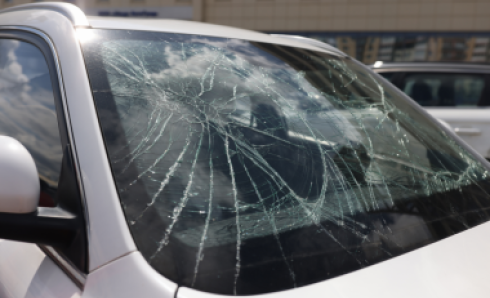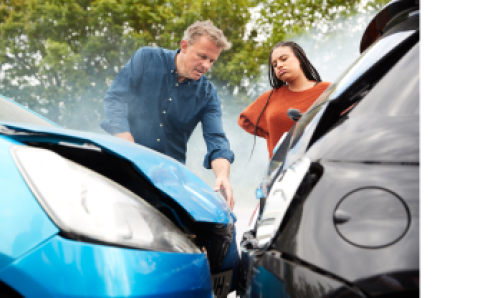Breaking down on a motorway - with vehicles hurtling past you at breakneck speed - can be daunting and potentially very dangerous. With limited space around you, safety is paramount for yourself and other road users. It’s easy to feel panicky and unsure of what to do - stay in the car, get out of the car - try to fix it yourself or call immediately for help, even if it’s a small problem.
This article will go through exactly what to do during a motorway breakdown in Ireland, focusing on immediate actions, safety protocols, breakdown cover, essential breakdown kit items, and specific advice for smart motorways.
What to Do After a Motorway Breakdown & How to Stay Safe
When it becomes clear there’s something seriously wrong with your car, and you need to pull into the hard shoulder, it’s only normal for a sense of dread to set in. The following steps are critical for safety, so here’s what you should do:
1. Position Your Vehicle
If you can still operate your vehicle, try to position it as far away from the traffic flow as possible. This reduces the risk of collisions with passing vehicles. Hard shoulders aren’t exactly huge, so it’s difficult to move that far from traffic, but at least ensure your car isn’t sticking out into the next lane.
2. Activate Hazard Warning Lights Immediately
Before you even think about opening that door and stepping outside, turn on your hazard warning lights to alert other drivers that your vehicle is experiencing difficulties. This is crucial for visibility, especially in poor weather or nighttime. Even during daylight, this can help prevent collisions by making your stationary vehicle more visible.
3. Forget the Warning Triangles & Repairs
While placing warning triangles to give drivers ample warning of your car is a great idea, in theory - and certainly something you should do on quieter roads - motorways are deemed too dangerous for you to do, so leave them in the car.
Also, don’t start tinkering under the hood. Motorways are fast-moving, potentially hazardous locations, and certainly not somewhere you should be getting your tools out and attempting some DIY.
4. Contact Breakdown Services Using Safe Methods
Use a mobile phone or motorway emergency phone to contact breakdown services. Provide precise location details using motorway markers - if you can - to speed up assistance. The Irish Motorway Emergency Assistance number is 0818-715-100, and they can help road users in difficulty if needed.
5. Get Out or Stay In
We recommend getting everybody out as quickly as possible via the passenger side and moving a safe distance from the motorway - probably over a safety barrier. Stories of vehicles being hit while parked on the hard shoulder are horrific, and if it happens, you don’t want to be anywhere near it.
Moving away from the traffic will also provide some much-needed mental relief. Having lorries thunder past you at 120km/h is nerve-wracking, so putting a bit of space between you and the madness will give you some clear-headedness and help reduce stress and anxiety.
Communicate Effectively with Emergency and Recovery Services
It’s common for recovery services to contact you again if they can’t find your position. Sometimes, during the initial panic, it’s not uncommon for people to give incorrect information.
After you exit your vehicle and move away, go over what you said to the emergency or recovery services, and if need be, prepare some more accurate information. Obviously, if you realise you’ve given them some wrong information, contact them again, and they’ll be able to amend the call-out.
How Breakdown Cover Works in Motorway Incidents
Understanding your breakdown cover options can significantly impact your experience during a motorway breakdown and what happens next.
Understanding Different Breakdown Assistance Options
Various breakdown assistance options are available, ranging from basic roadside assistance to comprehensive cover, including towing, alternative transport, and even accommodation.
All of these should be clearly laid out when you agree to a car insurance policy. If they’re not, don’t sign anything until you know precisely what you’ll be covered for.
If you don’t have breakdown cover or any kind of roadside assistance, you’ll have to pay the cost of the call-out yourself. This often isn’t cheap, which makes having at least some sort of coverage an excellent idea.
Breakdown Cover Benefits and Limitations
While breakdown cover can provide peace of mind and essential services during an incident, it's important to understand any limitations or exclusions in your policy, such as coverage limits or geographical restrictions. Again, before signing a new policy, find out exactly what you’re covered for and what you’re not.
What Essentials Should You Carry Inside a Breakdown Kit?
A well-prepared breakdown kit can be invaluable during a motorway incident.
1. Reflective Triangles and High-Visibility Vests
Reflective triangles should be carried in all cars, but as mentioned earlier, don’t try to put them out on a motorway. High-visibility vests are another kit necessity, which can be put on after breaking down to enhance your visibility to other road users, ensuring your safety while you wait for assistance.
2. Including Basic Repair Tools and a First Aid Kit
Don’t try to repair anything yourself on the hard shoulder of a motorway, but having some basic tools can allow for minor repairs in other circumstances. A first aid kit is essential for addressing immediate medical needs until professional help arrives. It doesn’t need to be anything overly fancy but should include:
- Bandages
- Adhesive tape
- Antibiotic ointment
- Gauze pads
- Basic painkillers
- Aloe Vera-based burn gel/ointment
- Tweezers
3. Carrying a Charged Mobile Phone and Portable Battery
We all know how naked we can suddenly feel when our mobile phone runs out of battery, and never more so when you’re broken down by the side of the road. Having a charged mobile phone and a backup power source ensures you can communicate with emergency services and breakdown assistance even if your car's power is compromised, as well as with family to keep them up to date.
How to Deal With Breakdowns on Smart Motorways
Smart motorways - or managed motorways as they’re sometimes called - have specific features and rules designed to improve safety and traffic flow, which are essential to understand during a breakdown.
In theory, smart motorways are supposed to increase traffic flow by using flexible speed limits and occasionally utilising the hard shoulder - and here lies one of the major problems.
Use Emergency Refuge Areas
On traditional motorways, the hard shoulder could be used at any moment in case of emergencies, but smart motorways sometimes use them to speed up traffic flow.
So, instead of a continuous and readily available emergency zone, they use emergency refuge areas to provide safe spots to stop if you encounter trouble on a smart motorway. These are marked and should be used whenever possible.
If you break down on a smart motorway and can’t reach a refuge area, call the Garda or Motorway Emergency Assistance at 0818-715-100 immediately and relay your location. They’ll be able to alert other road users that a vehicle is in trouble in the vicinity.
Follow Smart Motorway Protocols for Safety
While Irish roads are much safer now than ten or twenty years ago, the last few years have seen some fluctuation. Fatalities on Irish roads rose by 19% in 2023, compared with 2022, with a total of 184 deaths. Many of these occurred well away from motorways, but that figure remains a stark reminder that mistakes happen on the roads and lives can easily be lost.
By adhering to smart motorway rules, such as obeying variable speed limits and lane closures, you can help keep yourself and others around you safe. These protocols are designed to keep traffic flowing safely and aid in swift assistance during breakdowns, and while smart motorways may not be perfect, overall, they are doing their job.
Explore Roadside Assistance with 123.ie
Experiencing a breakdown on a motorway requires prompt and safe action to ensure your safety and the safety of other road users. Remember, the priority is always personal safety; material damage can usually be replaced or fixed, for humans, it’s not so easy.
If your car breaks down on the motorway, you’ll be glad you invested in comprehensive car insurance with 123.ie. We offer 24/7 breakdown coverage anywhere in Ireland, which includes either towing or on-the-spot repairs, along with emergency overnight accommodation if required. Breakdowns happen, but having a quality insurance provider behind you can make all the difference to what happens next.





